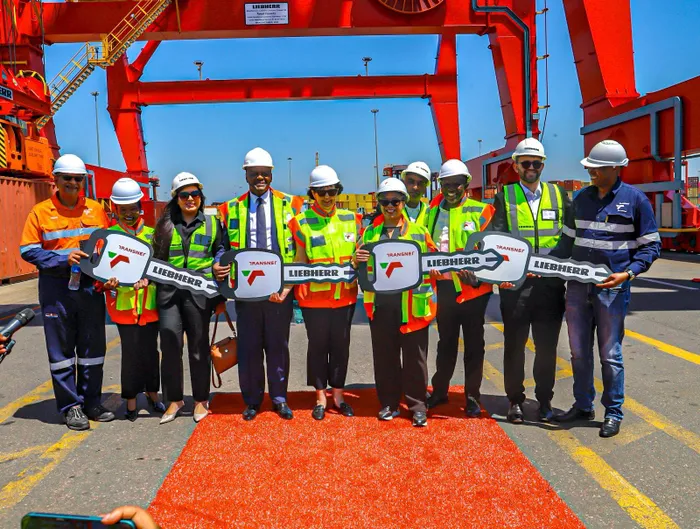Transnet boosts efficiency at Durban Container Terminal with nearly R1bn crane investment
LOGISTICS

Transnet announced last week that they are boosting capacity to enhance the terminal's operational efficiency, cargo-handling capacity, and competitiveness with four new ship-to-shore (STS) cranes valued at R967 million at the Durban Container Terminal (DCT) Pier 2.
Image: Supplied by Transnet
Transnet has announced a major boost to capacity and efficiency at the Durban Container Terminal (DCT) Pier 2 with the introduction of four new ship-to-shore (STS) cranes valued at R967 million.
The State-owned logistics group said the new cranes are part of a broader effort to modernise its infrastructure, improve turnaround times, and enhance South Africa’s global trade competitiveness.
According to Transnet, the cranes—manufactured by Liebherr Africa—will replace an ageing fleet that has reached the end of its operational life.
“Two of the cranes are being commissioned, with endurance testing and operational handover scheduled to start in the last week of October 2025,” Transnet said.
“The remaining two cranes are being assembled and are planned to undergo commissioning and operational handover by the end of November 2025.”
The new fleet forms part of Transnet Port Terminals’ (TPT’s) capital expenditure programme aimed at strengthening cargo-handling equipment across South Africa’s ports.
In March 2025, TPT introduced 20 straddle carriers and nine rubber-tyred gantries (RTGs) at DCT Piers 1 and 2, respectively—investments that have already begun yielding results.
The terminal recorded a 28.8% year-on-year increase in throughput during the recently concluded citrus export season.
Transnet said it has allocated R4 billion for equipment acquisition across its operations in the 2025/26 financial year.
The new cranes feature advanced cargo-handling systems with increased lifting capacity and reduced energy consumption, reflecting Transnet’s focus on operational efficiency and environmental sustainability.
“It is a reinforcement of Transnet’s commitment to improving service offering through investment in new equipment,” said Transnet Group CEO, Michelle Phillips.
“These cranes will enable us to turn vessels faster, to operate at higher winds and match the world-class efficiency that global trade demands.”
Phillips added that faster cargo processing directly supports South Africa’s export-led growth strategy, contributing to competitiveness and economic prosperity.
“Faster processing of cargo at our terminals directly supports South Africa’s export-led growth strategy, boosting global trade competitiveness and economic prosperity.
These new STS cranes replace an old fleet that had reached its end-of-lifecycle. The investment is set up to increase the terminal’s volume throughput and significantly boost productivity and efficiency levels.”
The Durban Container Terminal Pier 2, which handles 60% of South Africa’s container volumes, is the largest and busiest container facility in Southern Africa. It also remains the only terminal on the continent equipped with tandem lift cranes capable of lifting up to 80 tons at once.
Economists have welcomed the investment, noting its significance for trade efficiency and regional competitiveness.
"It's important for the country as such but I think even for southern Africa as well," said Ulrich Joubert, an independent economist.
"Transnet Group CEO mentioned that it will assist the harbour to turn vessels around faster and that indicates that the cost for a vessel to anchor in the harbour will be less and that assists in cutting costs for imports as well as exports."
Joubert added that the ability to operate at higher wind speeds would particularly benefit ports like Cape Town, which handles large volumes of fruit and citrus exports.
“The high efficiency is demanded by global trade," Joubert said.
"So if you want to be competitive in the world economy as such, if the harbour wants to be competitive in the sense of competing with other harbours in the world but especially then in southern Africa, it is so important that efficiency is increased. It is really important and anything that improves the capacity of the harbours in South Africa is important.”
Unisa economist, Dr Eliphas Ndou, said that this upgrade will improve the operational efficiency of the port, making the port more competitive through reducing the delays in loading of goods being exported.
“The South African economy needs more exports to uplift the weak economic growth,” Ndou said.
BUSINESS REPORT